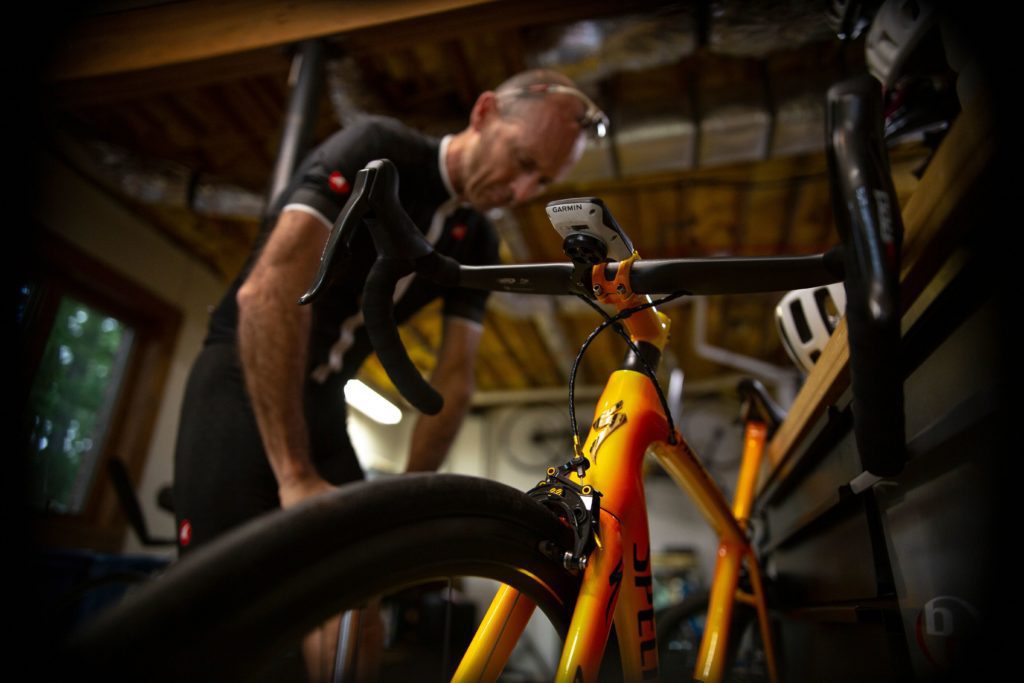

Brent Graves-CEO & President
Cycling, particularly road racing and increasingly mountain biking, is full of misnomers and misunderstandings. Some are humorous but others can cause headaches. Many times ignorance and elitism combine to keep others out via a secret language that forms a barrier to entry into the “club”. There’s even a book, that I must admit is hilarious if you don’t take it too seriously, that outlines The Rules of traditional road racing it terms of how real cyclists should think and behave. Much of this persists despite the increasing accessibility of information and knowledge to all with a digital device. Here I will shed some light on some of these misnomers and misunderstandings.
Let’s start with some misnomers. Maybe the shop mechanic tells you a new chain is needed because yours has “stretched”. You might wonder how a bicycle chain made of steel can stretch. Well, it doesn’t. As a chain wears it indeed gets longer, but that is not because the steel plates have stretched. A typical chain consists of about 112 links that are connected by pins. Around the pins are rollers that rotate around the pins to reduce friction between the pins and sprocket teeth. Over time the pins and rollers wear down ever so slightly. This results in looseness or increased tolerance. When you pull the worn chain apart the looseness at each connection is taken up. While it’s a small amount, when you add up 112 small amounts, you see a chain that is maybe 5mm longer.
Upon delivery of your new bike, the salesperson reminds you to bring it back in 30 days for a quick check-up. He says cables stretch on a new bike, which can cause shifting problems. As with the chain, the looseness in the steel cables is not due to the stretching. There are pieces of housing that have caps pressed on each end that the cables pass through. These pieces are many times not fully seated or pressed together during initial installation, but shifting gears gradually rectifies that. However, as shifting compresses the system over and over the housing/cap pieces become just a bit shorter. This causes slack in the cable. So shifting first takes up the slack before trying to move the chain to the next sprocket. If there’s enough slack, the chain won’t make it to the next sprocket.
The shifting problem from stretched (am I perpetuating the misnomer?) cables can easily be fixed with a little turning of the adjustment barrels. There’s almost always an adjusting barrel on the rear derailleur, and usually there are one or two more on the frame or connected in the housing near the front of the bike. Though it is a simple adjustment, many get confused on which direction to turn the barrel. Normally clockwise tightens things. So if there’s slack in the cable, should you turn the barrel adjuster clockwise? No. To take up slack in the system you need to turn it counterclockwise – this extends the barrel into the cable system to remove the slack.
So why do riders clip into clipless pedals? This goes back a few decades when performance bikes had cages attached to the pedals. The cages, usually called toe clips, along with some straps were designed to keep your feet fixed to the pedals. They were not easy to use, did not work all that well, and could uncomfortably cut off the circulation to the toes if the straps were cinched down to really keep your feet in place. So pedals were invented that connected to shoes with a locking cleat interface. Since these newfangled pedals did not have toe clips, they were referred to as clipless. But the “clip-in” terminology used to convey being locked into the pedals remained in use just the same.
Maybe someone has told you it is a good idea to regularly tighten the bolts and nuts (aka fasteners) on your bike. Should you do this? While checking the torque on fasteners is a good idea, this does not mean just tightening them. Doing so can lead to over-tightening which can stress and damage parts – especially carbon fiber parts. The thing to do is to first loosen the fastener and then re-tighten with a torque wrench to the specification for the part. Increasingly parts have the torque specification etched near the fastener.
Larger volume tires require lower air pressure. This is because volume and pressure are inversely related. So a 19mm (.75”) tire on a track bike may require 120 psi, whereas a 2.5” (63.5mm) on a mountain bike may need only 20 psi. With the trend to larger tires on-road and dirt, many riders are leaving a lot of the benefits of larger volume tires on the table. These benefits should include more compliance (and comfort), better traction, reduce the chance of flatting, and usually lower rolling resistance. The last one is tricky, and recent marketing has made it confusing. Basically, the rougher the surface the lower the pressure results in lower rolling resistance. This enables the tire to absorb small bumps and maintain maximum forward movement instead of bouncing vertically when bumps are encountered. However, higher pressures start performing better when the surface gets smoother.
As usual, there is always more to the story. Hopefully, the preceding arms you with more understanding that helps knock down some of the barriers to the wonderful world of cycling.
Monday: 10:00 am – 5:00 pm
Tuesday – Thursday: 10:00 am – 5:00 pm
Friday: 10:00 am – 5:00 pm
Saturday – Sunday: Closed